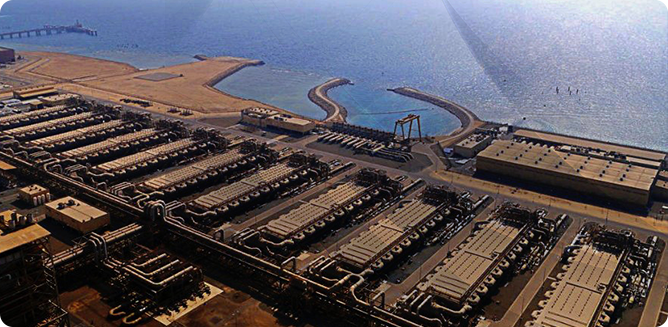In terms of oil consumption used for its electricity sector Saudi Arabia matches the entire oil consumption of Italy, Spain or Turkey. The kingdom’s oil for power use spikes over 1 million barrels per day in summer to generate power and water.
Writing for The National, well-known energy expert, Robin Mills notes that:
“Like its GCC neighbours, Saudi Arabia needs large volumes of fuel for desalination and air-conditioning. It is on a bigger scale, though, and with the exception of Kuwait, its other Gulf colleagues use gas almost exclusively instead of oil. Fuel is supplied to the power sector at very low prices: until recently, less than $7 per barrel of crude oil.
After subsidy reductions in 2016 and 2018, electricity demand flattened out. But the attempts to diversify the economy, boost industry and tourism, and construct new cities, have seen power consumption resume its strong upward growth from 2021 onwards. An increasingly hot climate and new sectors such as data centres will push up future electricity needs: peak demand was up 9.5 per cent in the first half of this year.”
Annually, Saudi Arabia consumes approximately 3.7 million barrels a day, the world’s fourth highest rate behind the US, China and India and this consumption peaks in the late August and September period as air conditioning demands and desalinated sea water requirements rise.
The Saudi Electricity Company recently reported that in the first half 2024, electricity consumption increased by 6.1% year-on-year to a record 146TWh. Peak demand was up 9.5% at 72.9GW.
Yet, according to Jamie Ingram writing for MEES, although Saudi Arabia’s electricity generation surged by 6% in the first half of the year. “oil burn is down against 2023 levels thanks to higher gas availability and the growing role of renewables in the power mix.” It should be noted that Saudi Arabia imported 700,000 tons of fuel oil from Russia in July nearly doubling its June purchases so the oil burn rate may change in the next few months. In fact there is a swing of almost 1 million bpd between summer and winter demand in KSA.
In the longer term, for many reasons Saudi Arabia is aware of the need to reduce its domestic oil consumption – especially that used for electricity – and has launched the Liquid Fuel Displacement Program intended to reduce domestic consumption by 1 million bpd by 2030.
Javier Blas notes in Bloomberg that, “Key to that plan is the development of the Jafurah basin, a shale-type natural gas reservoir in the Saudi eastern coast. The additional gas from Jafurah “will eliminate” oil consumption to generate electricity, Amin Nasser, the chief executive officer of state-owned Saudi Aramco told investors recently. “Almost 50% of the utility [sector] will be in renewable and 50% will be in gas.”
The Jafurah project is slated to increase gas output to at least 16 billion cubic feet per day by 2030, from 10.7 bcf last year. The increase is equivalent to about 900,000 bpd of oil.
In fact, in its June report, the IEA forecast that, “Saudi oil demand would see the second-steepest decline in absolute terms between now and the end of the decade, falling by more than 500,000 barrels a day. Only the US, thanks to work-from-home and more efficient gasoline and diesel vehicles, in addition to EVs, would see an even larger drop.”
Progress in reducing Saudi Arabia’s annual and seasonal oil use for electricity is being made but the challenges are numerous. For example, renewable output varies seasonally; solar output is greatest in the late spring when days are longer but temperatures still relatively cool. Electricity demand, meanwhile, is at its lowest in the cooler months of February and March, highest from June to September.
Significant nuclear power capacity continues to lag behind neighbors such as the UAE and remains at least a decade away.
Yet, as Robin Mills concludes in his article for The National:
“The country has had an active energy efficiency program for several years, including methods such as district cooling. But electricity prices are still quite cheap, and tariffs do not vary by season or by time of day to encourage storage or optimal timing of consumption. Still, even if the goals are not fully achieved, the Saudi power sector will look radically different by 2030. If the authorities can get all the moving parts of oil, gas, electricity, renewables, efficiency and perhaps nuclear working together, they will save money, cut emissions, and have a machine to drive towards net-zero.”
To read more, click here, here, here and here.









